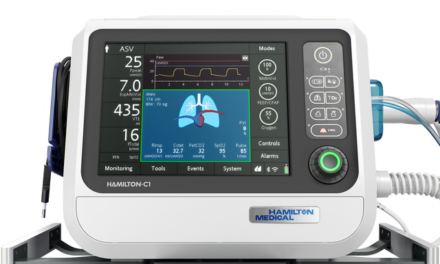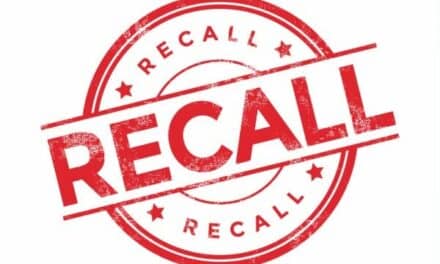To effectively manage medical device safety alerts, create a culture of shared responsibility
Each year, ECRI Institute publishes its list of the Top 10 Health Technology Hazards for healthcare organizations. This list is designed to guide healthcare leaders in selecting high-impact safety initiatives, including complex issues like technology safety. The last hazard on this year’s list, “Overwhelmed Recall and Safety Management Programs,” can often be overlooked or neglected. However, effective alerts management is a critical component of assuring patient safety and preventing adverse events. It should be a top priority for every facility.
Implementing an effective alerts management system needs to be an organized and unified process, but it can be difficult to know where to start. There needs to be involvement from the patient safety, risk management, and quality improvement departments, as well as supply chain and clinical engineering staff. Once a system is in place, it can be difficult to get the right information to the right people, and ensure the loop is closed when your organization is affected by a hazard or recall.
Healthcare facilities often face similar hurdles when trying to introduce and sustain their alerts programs. ECRI Institute has identified common challenges in four key areas based on our experience with Alerts Tracker, ECRI’s automated alerts management system. Those areas include:
- Leadership and sponsorship
- Collaboration
- Alerts acquisition and review
- Documentation and reporting
By becoming aware of potential pitfalls and adopting best practices, healthcare facilities can increase the likelihood of achieving a successful recall and safety management program.
Leadership and Sponsorship
Alerts management should be promoted as an essential patient safety initiative. If it is not perceived as an organization-wide priority, departments may be unwilling to participate in the process, undermining the efforts of those who are actively engaged. An effective program should involve both removal of unsatisfactory products from the patient care environment and increased awareness of healthcare technology risks.
If your organization has already experienced an adverse incident related to healthcare product alerts, you have likely gained an appreciation for the complexity involved in managing them. Other facilities may be operating with a false sense of security and find it challenging to engage hospital leaders before a high-profile event. What if you could mitigate the risk before an event happens? A well-organized system can highlight what risks have been averted thus far and help gain support for changing processes.
Sponsorship is at the heart of any successful alerts management program. Active executive support will promote awareness that alerts management is a team effort, and not just the responsibility of areas like purchasing and engineering. Clinicians also need to be reminded that their involvement is critical to the success of the program, and ultimately patient safety.
To garner the involvement of patient safety and risk management departments, collect documentation on alerts that affect your organization and identify where support is needed to strengthen the process. If these departments are already involved, continually update executive sponsors on how their efforts are helping avert risks and where their support can make the process more effective.
As part of your initiative, convene a committee, identifying potentially affected patient care areas and enlisting the appropriate stakeholders. A good idea would be to assemble an internal alerts evaluation team, including a program coordinator. Members of this team could include department directors, administrators, and clinical partners who would assist in directing actions and responses to alerts, especially critical or urgent ones. The program coordinator may be the director of risk management or a designee, and would be accountable for overseeing the hospital’s alerts management to evaluate overall impact. In more effective programs, teams consist of stakeholders in the following areas:
- Risk and/or quality and patient safety
- Clinical engineering
- Materials management/supply chain
- Lab
- Pharmacy
- Food services
Establishing an organization-wide team to oversee alerts management can reinforce that risks are being evaluated and addressed by all potentially affected departments. To build a successful team:
- Clearly define each role on the team and document procedures for safety alert processing in writing.
- Each team member should be well trained on the process and expectations.
- It is important to understand the needs and processes of stakeholder departments, including contracted employees and ancillary facilities.
- Strive to set goals that are measurable and reasonable.
Reiterating the goals of the process can help promote system buy-in and a shared view of alert management not as an administrative activity, but as a top patient safety priority.
Collaboration
Staff involvement is another critical element of establishing a strong alerts management program. Staff may see recall management as a clerical task that is the sole responsibility of the supply chain and clinical engineering departments. Clinical staff in particular may resist participating in activities outside patient care unless they understand why their involvement is necessary. It is important to make alerts management activities worthwhile for these staff members, stressing the relationship between alerts management and patient safety.
Duplicate efforts can result when communication pathways are not effective or clearly defined. Since alerts can enter a facility through many different routes, it can be challenging to ensure notifications do not fall through the cracks. Multi-hospital health systems may face particular difficulty tracking which employees are receiving manufacturer recall notices directly. It’s important to ensure that a response to a manufacturer from one facility does not inadvertently represent the entire health system’s status with the notification. For example, if one hospital in a health system receives a recall alert and responds to a manufacturer that it is not affected, the documentation should clearly indicate whether other sites in the network may still be at risk.
Cultivating safety advocates can help advance the overall objectives of a successful recall management system. Making the program worthwhile for staff involves:
- Top-down communication that alerts management is an organizational priority.
- Enlisting the right champions from each department.
- Providing processes and tools that make the effort very routine for clinicians and support staff.
- Requiring credentials for participation, and excluding departmental designees if they are not qualified.
- Providing feedback to sponsors about the benefits of the program and to participants about why their efforts are making a difference.
Additionally, your program should be sufficiently documented, so that others can continue it in the event of sudden personnel changes or a reshuffling of resources. Safety alerts management should also be part of the orientation experience for new employees, so individuals know early on how product alerts are managed at that organization. Even when personnel become unavailable due to vacations or scheduling changes, there should be clear direction as to who should be doing what and when for alerts management.
Alerts Acquisition and Review
There are many unique challenges to establishing a reliable alerts acquisition system. Alerts may get lost in the mail. Even once the recall is delivered to the hospital, there is no guarantee a notification will make it into the right hands and won’t get buried in stacks of paper on someone’s desk. Information provided in a recall notice may be incomplete or confusing, and it can be difficult to match the recalled item to your inventory. Inconsistencies like unstocked products, abbreviations, missing details such as lot numbers, and discrepancies between manufacturer and distributor product names and numbers can further complicate the issue.
When thinking about the different ways an alert can enter a healthcare system, it is important to understand your organization and the pathways by which supplies and equipment are distributed. Communication and clear understanding of each site’s involvement in the alert management process is a helpful start. Sound processes and policies can help lay the groundwork for effective alerts receipt and distribution throughout the system. Staff needs to know whom to inform when they receive alerts directly from manufacturers and distributors. Hospital policy should specify the members of the alerts program coordination team so staff can forward all such notices. Whenever possible, purchase agreements should include a requirement that suppliers send alerts directly to the program coordinator. With these measures, your organization can ensure that information reaches the right people and avoid redundant communication.
Once the alerts have been delivered to the appropriate people, consider processes regarding how the information is evaluated against inventory data. Centralized purchasing maximizes the completeness of the hospital’s purchasing database, resulting in more effective product searches when responding to alerts. Similarly, if clinical engineering is able to perform acceptance testing on all new and leased devices that enter the hospital, its inventory database will be comprehensive and increase the likelihood that accurate data is accessible. Universal, centralized purchasing and acceptance testing also reduce the burden on additional departments, because supply chain and engineering staff can more reliably identify affected products.
Documenting and Reporting
A common challenge for a safety alerts management program is maintaining complete, accessible documentation on a recall. For more complex recalls and hazards, it may take a while to track down the full documentation and identify what steps were taken. Without collaborative policies and procedures, information may be accessible to only a few individuals. Keep in mind that vendors may provide product samples directly to departments, bypassing standard purchasing routes. If the standard purchasing department does not know about the sample, and the department using the sample does not know about the recall, patients may be at risk.
Having complete and accessible documentation available is also crucial when the FDA visits an organization. Staff may be asked to pull up information on a specific alert such as:
- When the notice was received by the hospital.
- Dates and other details from the acknowledgement form returned to the manufacturer.
- Actions taken by the hospital.
Having a well-documented policy with appropriately trained parties can ensure your organization is well prepared for regulatory and audit scenarios.
Closing the Loop
Once the program is established, showcase its benefits by illustrating the risks the program has successfully mitigated. Having a closed-loop process will help easily identify which alerts currently or recently affected your hospital. The process will also identify areas of vulnerability, such as departments that are not complying with alerts management policy. Taking corrective action will help reduce the potential for alerts to be missed in those areas. Understanding the reasons for noncompliance can enhance your program, and help lay the groundwork for policies and procedures that will work best at your organization. Side-by-side comparisons of program compliance across departments and facilities help promote friendly competition, and can be helpful to share with hospital staff and health system leaders.
Recall and safety notice management is a crucial element in maintaining and ensuring patient safety. Developing and managing this program can be a daunting task. There is no one-size-fits-all approach. However, by building awareness at all levels of the organization, practicing diligent alerts management through a closed-loop system, and setting and maintaining program metrics, you will minimize the risk of missing alerts and related adverse events. Adopting a larger framework of overall product safety alerts management can help cultivate a network of safety champions within your organization and advance the ultimate objective of patient safety excellence.
Kristina Cybularz is manager, Alerts Tracker at ECRI Institute. For more information, contact editorial director John Bethune at [email protected].




